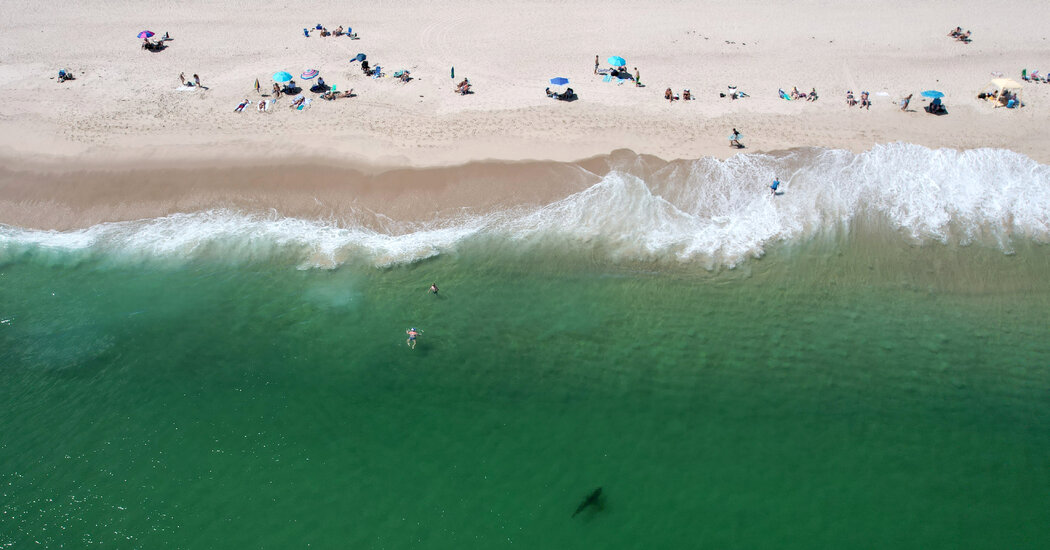
For Shiffman, our inability to conceptualize relative risk is both an ecological and aesthetic tragedy, undermining conservation efforts while preventing us from exulting in the glory of sharks — with their dermal denticles, their total lack of bones and their ability to hear an injured fish from a mile away. The syllogism he implies is comforting: Only idiots are afraid of sharks; you are not an idiot; therefore you are not afraid of sharks.
The plain talk stands in contrast to a best-selling book from 2005, Susan Casey’s “The Devil’s Teeth: A True Story of Obsession and Survival Among America’s Great White Sharks.” That one is engineered for goose bumps. When two researchers in Casey’s book hop on a boat to observe shark activity, it isn’t long before “the dorsal fin of myth and nightmare rose from below and came tunneling toward them like a German U-boat, creating a sizable wake.” The book’s title plays on our fears too, with a piece of light misdirection; the “devil’s teeth” refers not to sharks but to the craggy Farallon Islands in California where they cluster.
The dominant shark iconography of my youth (18 miles from the Farallon Islands, incidentally) took the form of a bumper sticker from a nearby surf shop. The sticker was everywhere. It looked like a no-smoking sign, with a red circle bisected by a slash — but instead of a cigarette, the circle contained an image of a shark. Like any respectable piece of lore, this was not what it appeared to be. The idea of banning sharks the way you’d ban cigarettes or double parking was a cosmic joke. The surfers who bore the sticker were on the same page: Disguising yourself as prey and paddling into a shark habitat was equivalent to signing a release of liability waiver.
I visit Marconi less often now, but more from inaptitude than fear. The writer and naturalist Henry Beston described the area in 1928: “The peninsula stands farther out to sea than any other portion of the Atlantic coast of the United States; it is the outermost of outer shores.” Beston, who retreated to the dunes after his experiences in World War I, likened the sound of an incoming tide to “the fury of battle.” The sandbars along the coast shift on what seems like an hourly basis, resulting in waves that repel attempts at coercion. Calculating the coordinates where swell, wind, current and tide harmonize requires a granular knowledge that is reserved, as it should be, for locals.
An app called Sharktivity tracks sightings in the area, with the idea to “reduce encounters and promote safety.” Whenever a white shark sighting is confirmed near a public beach, app users receive a red alert. Some of the tagged sharks have been named. (Agnes, Big Papi, Turbo, Sean.) Occasionally I monitor the app to see where the gang is convening, though Sharktivity warns that “THE ONLY WAY TO COMPLETELY RULE OUT A CLOSE ENCOUNTER WITH A SHARK IS TO STAY ON SHORE.”
From Shiffman’s book I’ve learned that death by Carcharodon carcharias and friends is far less likely than most shark media would have us believe. The haunting powers of the bar graph at Marconi have diminished. But maybe this is because death by shark no longer strikes me as the worst way to perish, compared with the alternatives. Many times since reading “Why Sharks Matter,” I’ve played out the scenario in my head. Floating in salty bliss, I sense an aberrant shift in water molecules. Along comes a statistically anomalous great white. Possibly it is Agnes. I am hit, I go into shock and I bleed out beneath a vast and uncaring sky, dying exactly as I lived: unsuspecting and engulfed.




